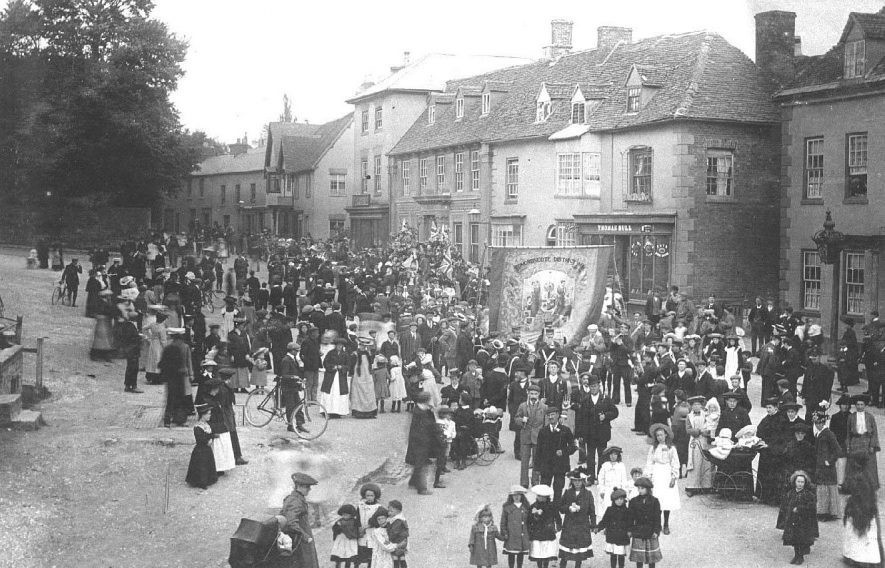It is estimated that in 1795 Southam had some 750 inhabitants, including farmers, tradesmen, publicans for its 13 ale houses and shopkeepers, together with landowners and the professional classes and their families. Of these, 93 individuals were members of the town’s Friendly Society, a group that met every quarter, paying 2 shillings each towards their maintenance and mutual support.
During this period governments in Britain began to be aware of a growing number of ‘fraternities’, including friendly societies. As a result of the American (1776) and French (1789) Revolutions, and the war started with France in 1793, it was a time when there was great fear that ‘fraternal’ groups could harbour revolutionaries in Britain. As the historian Francis Adams stated some years after:
‘ … if any proposition could be brought within the general category of ‘French principles’ it was enough to enlist the vast mass of society against it … ’
Consequently the Friendly Society Act of 1793 attempted to license through registration and regulation all new groups (fraternities) to ensure loyalty to the Crown in their written constitutions. In subsequent years thousands of such groups were promoted under such names as the Oddfellows, parochial Penny clubs and later in Southam a Pig Club in 1879 and in Harbury the Alfred Society.
The philosophy behind the Friendly Society in Southam was to create a popular appeal and sense of belonging to a brotherhood united for the benefit and self-support of its members – particularly to protect members against illness, old age and death. This was especially important at a time when there was no state provision for the poor, sick or unemployed, only the possibility of ‘parish relief’ and, after 1836, the workhouse.
As well as meeting each quarter and paying a 2s fee, the Southam group held an annual Feast Day where stewards were elected for the ensuing year. Their job was to preside at the meetings, visit the sick and ensure that they received the appropriate benefits.
Sick members who had been registered for one year were allowed 3s a week; after two years 6s a week was paid out; members who were able to get some work before they could make a full recovery had their wage made up by the Society, and members who were incapacitated by old age were allowed to earn what they could and also receive 6s. On the death of a member, 40s was granted to the widow for funeral expenses, and at the following Feast each member of the Society subscribed a share of a further £3 for the widow. All members were bound to attend the funeral under a penalty of 1s; attendees were allowed one pint of ale. Anyone between the ages of 16 and 35 could join the Society on payment of a 10s fee.
The Friendly Society was a popular and successful means of self-support, particularly for so many who wished to avoid being classified as a pauper or vagrant in perilous times of disease and low life expectancy. It was also a great insurance for wives and families. Of course, it must be remembered that the Friendly Society would have catered exclusively for those who had sufficient disposable income; such benefits would have been beyond the reach of many people in Southam.
The lasting success of the Society can be evidenced through the photograph capturing their parade on Market Hill in 1908.
Southam Heritage Collection is located in the atrium of Tithe Place opposite the Library entrance. Opening times Tuesday, Thursday, Friday and Saturday mornings from 10am to 12 noon. To find out more about Southam’s history, visit our website www.southamheritage.org telephone 01926 613503 or email southamheritage@hotmail.com You can also follow us on Facebook.


Leave A Comment